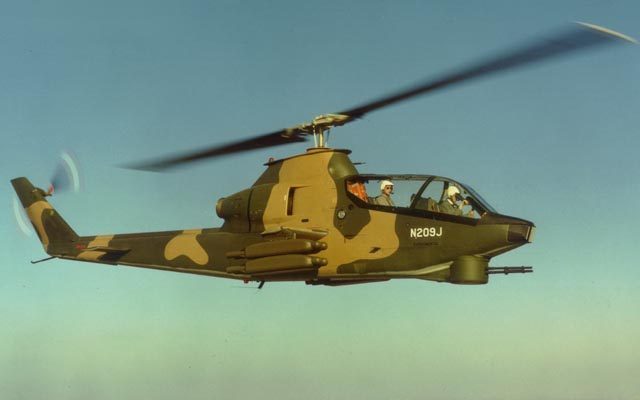On Sept. 7, 1965: Bell Helicopter flies the prototype of its Model 209 attack helicopter, a private venture to address the US Army’s need for a dedicated aerial gunship. Work on the project that became the AH-1G HueyCobra began in 1965 as Army losses of Bell’s iconic UH-1 Huey utility helicopters modified as gunships in Vietnam began to increase.
The troop-transport Hueys, which debuted in 1959 and revolutionized Army air mobile strategy, were too large and slow for the attack job, prompting the Army to seek a faster and more nimble aircraft that would support air assault operations.
One month after Bell management approved the program, production began at the company’s plant in Fort Worth, Texas. The prototype was completed in seven months, borrowing the Lycoming T53 engine, rotor and tail of the aircraft are the UH-1, but its two-man crew seated in tandem in a novel, sleek fuselage. The prototype had retractable landing gear to increase speed.
The Army picked the Bell submission over Boeing-Vertol, Kaman, Piasecki and Sikorsky proposals and originally designated the new aircraft the UH-1H HueyCobra. In recognition of the new helicopter’s attack role, the designation was changed to AH-1G.
The new gunship entered service in 1967 and was rushed to Vietnam where it supported ground forces.
Between 1967 and 1973, more than 1,100 were built for the US Army and Marine Corps. Some 300 were lost in combat and accidents.
They remained in service with the Army until replaced by the AH-64 Apache, but continue in service with the Marine Corps, which has continued to upgrade both UH-1 and AH-1 aircraft. The Marines originally used the single-engine G-model, but transitioned to the twin-engine J-model. The Marines have continually upgraded both Huey and Cobra aircraft and have fielded the UH-1Y and AH-1Z versions.
The Model 209 prototype was used for testing and was eventually displayed at the Patton Museum at Fort Knox, Ky. In the early 2000s, the aircraft was moved to the Army’s Aviation Museum where it remains in storage.




